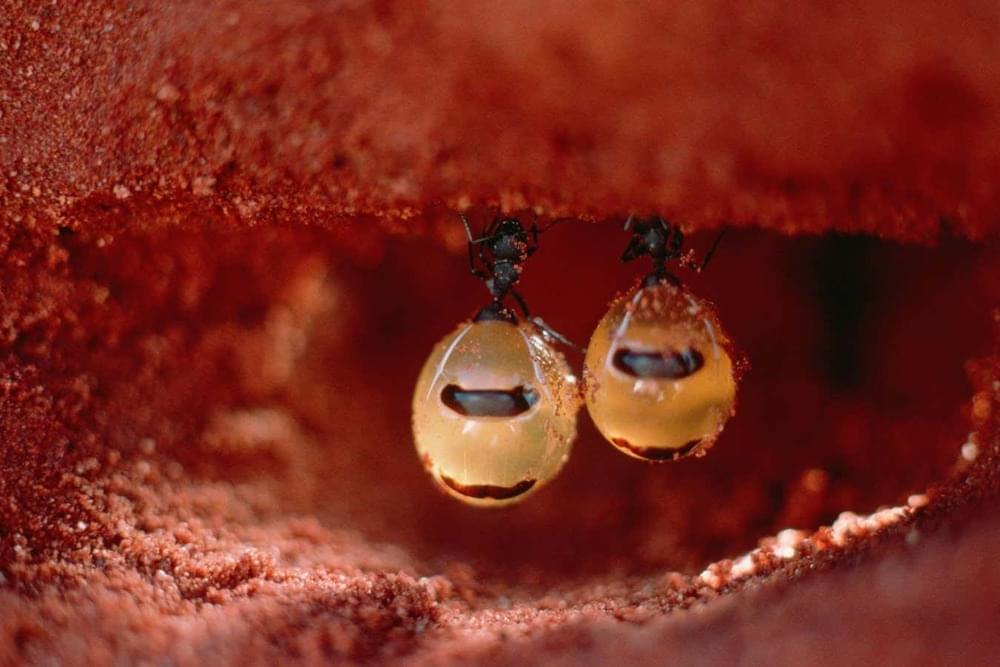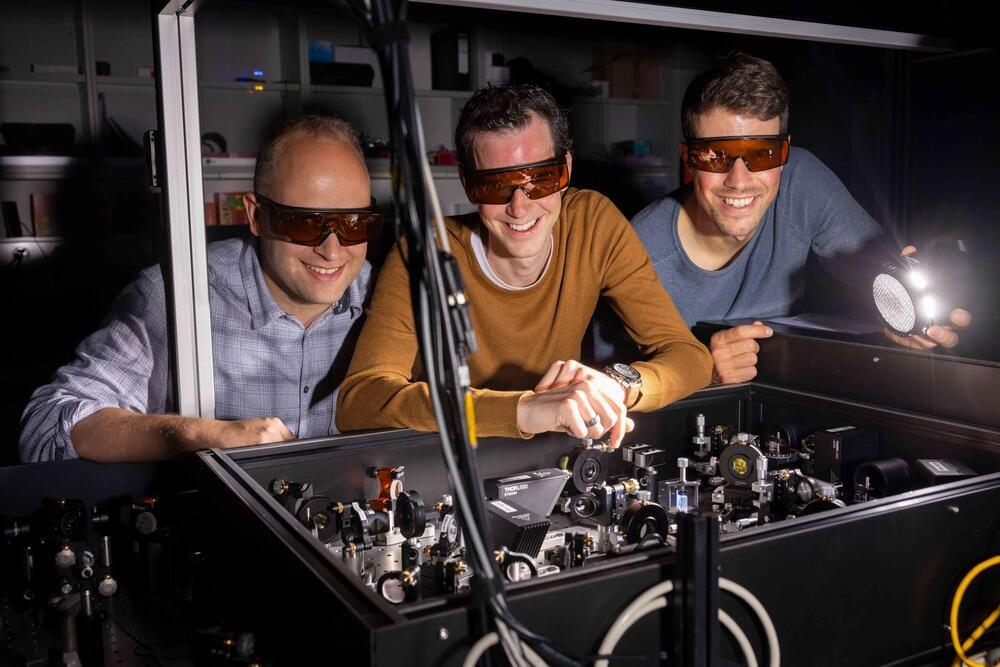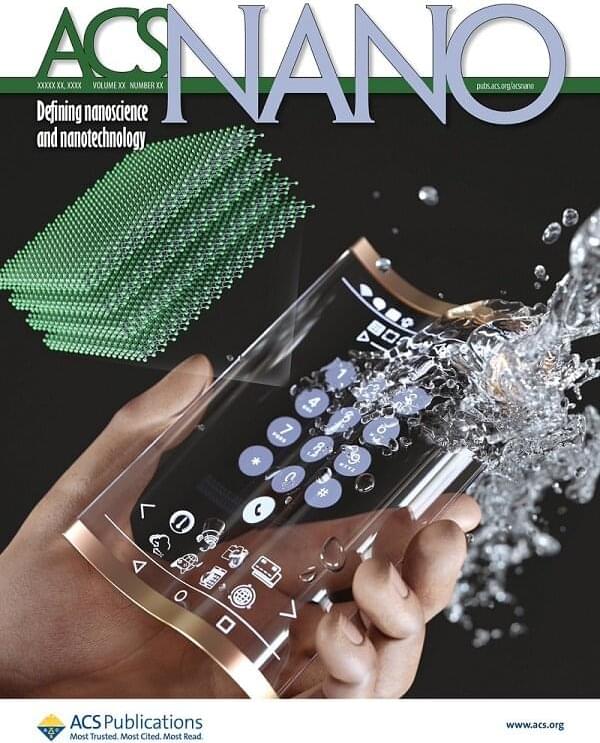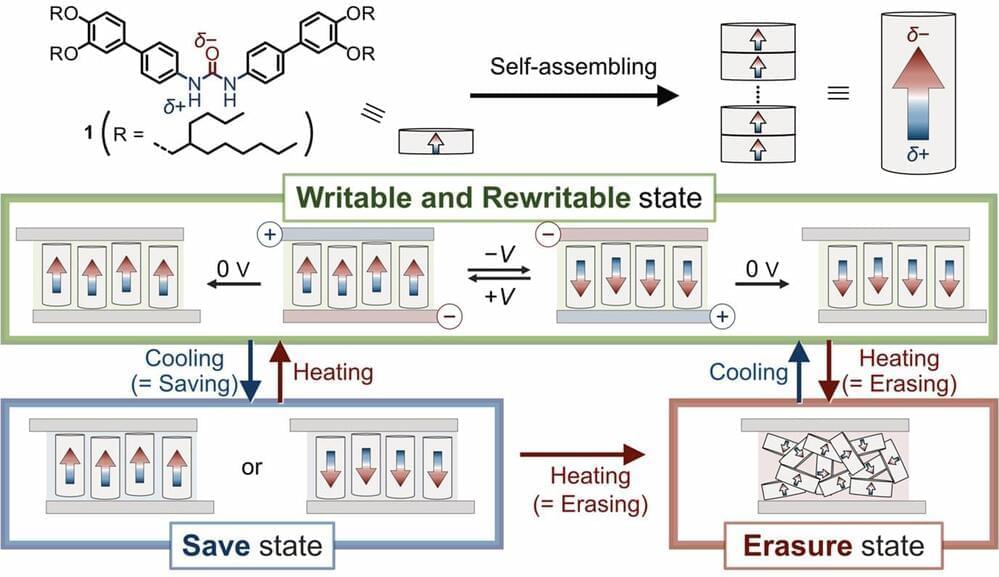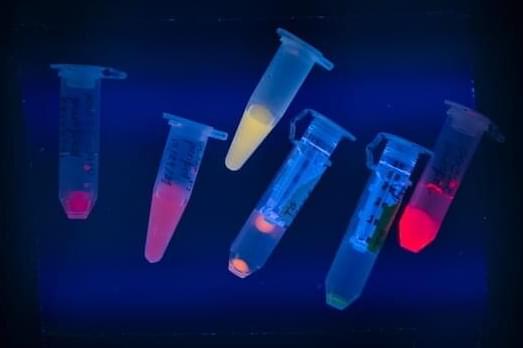Page 2611
Jul 26, 2023
NIH-funded study explains link to increased cardiovascular risks for people with obstructive sleep apnea
Posted by Shubham Ghosh Roy in categories: biotech/medical, health
Reduction in blood oxygen levels, largely attributed to blocked airways, emerges as a leading factor.
Researchers have found that people with obstructive sleep apnea have an increased cardiovascular risk due to reduced blood oxygen levels, largely explained by interrupted breathing. Obstructive sleep apnea has long been associated with increased risk of cardiovascular issues, including heart attack, stroke, and death, but the findings from this study, partially supported by the National Institutes of Health and published in the American Journal of Respiratory and Critical Care Medicine, show the mechanism mostly responsible for the link.
“These findings will help better characterize high-risk versions of obstructive sleep apnea,” said Ali Azarbarzin, Ph.D., a study author and director of the Sleep Apnea Health Outcomes Research Group at Brigham and Women’s Hospital and Harvard Medical School, Boston. “We think that including a higher-risk version of obstructive sleep apnea in a randomized clinical trial would hopefully show that treating sleep apnea could help prevent future cardiovascular outcomes.”
Whether episodes of acute kidney injury (AKI) lead to worsening chronic kidney disease (CKD) still is under debate, and some countries now incentivize stricter renal monitoring of patients following hospitalizations for AKI. U.S. researchers prospectively identified 433 adults with known CKD (defined as ≥50% increase in serum creatinine level) and examined whether those episodes contributed to worsening of CKD during 4 years of follow-up. Nearly all the episodes of AKI were stage 1 or 2 (i.e., the ratio of peak to nadir serum creatinine was less than 3).
After adjusting for an extensive set of potentially confounding variables, patients with stage 1 or stage 2 AKI did not have substantial decreases in estimated glomerular filtration rate (eGFR; calculated using creatinine or using cystatin C level) or have substantially accelerated changes in eGFR over time.
These results suggest that in a patient with known CKD, an episode of AKI generally doesn’t affect the subsequent natural history of CKD. Whether more-severe AKI (stage 3 or stage 4) portends worse CKD outcomes could not be determined in this study due to small number of patients with such disease severity.
Jul 26, 2023
Dr Munshi on the Future of CAR T-Cell Therapy in Multiple Myeloma
Posted by Shubham Ghosh Roy in categories: biotech/medical, futurism
Nikhil C. Munshi, MD, discusses potential future directions for ciltacabtagene autoleucel and other CAR T-cell therapies in patients with multiple myeloma.
Jul 26, 2023
Las Vegas Sphere Touts World’s Largest Concert-Grade 3D Audio System
Posted by Shane Hinshaw in category: futurism
The bowl-shaped venue will use audio beam-forming to allow every person to hear clear audio regardless of their location inside the venue.
Jul 26, 2023
New study reveals spin in quantum dots’ carrier multiplication
Posted by Dan Breeden in categories: chemistry, nanotechnology, quantum physics, solar power, sustainability
A new approach to developing semiconductor materials at tiny scales could help boost applications that rely on converting light to energy. A Los Alamos-led research team incorporated magnetic dopants into specially engineered colloidal quantum dots—nanoscale-size semiconductor crystals—and was able to achieve effects that may power solar cell technology, photo detectors and applications that depend on light to drive chemical reactions.
“In quantum dots comprising a lead-selenide core and a cadmium-selenide shell, manganese ions act as tiny magnets whose magnetic spins strongly interact with both the core and the shell of the quantum dot,” said Victor Klimov, leader of the Los Alamos nanotechnology team and the project’s principal investigator. “In the course of these interactions, energy can be transferred to and from the manganese ion by flipping its spin—a process commonly termed spin exchange.”
In spin-exchange carrier multiplication, a single absorbed photon generates not one but two electron-hole pairs, also known as excitons, which occur as a result of spin-flip relaxation of an excited manganese ion.
Jul 26, 2023
Characterizing atomic defects in 2D materials to determine suitability as quantum emitters
Posted by Dan Breeden in categories: chemistry, quantum physics
The term molybdenum disulfide may sound familiar to some car drivers and mechanics. No wonder: the substance, discovered by U.S. chemist Alfred Sonntag in the 1940s, is still used today as a high-performance lubricant in engines and turbines, but also for bolts and screws.
This is due to the special chemical structure of this solid, whose individual material layers are easily displaceable relative to one another. However, molybdenum disulfide (chemically MoS2) not only lubricates well, but it is also possible to exfoliate a single atomic layer of this material or to grow it synthetically on a wafer scale.
The controlled isolation of a MoS2 monolayer was achieved only a few years ago, but is already considered a materials science breakthrough with enormous technological potential. The Empa team now wants to work with precisely this class of materials.
Jul 26, 2023
Research team develops a washable, transparent, and flexible OLED with MXene nanotechnology
Posted by Dan Breeden in categories: computing, health, military, nanotechnology
Transparent and flexible displays, which have received a lot of attention in various fields including automobile displays, bio–health care, military, and fashion, are in fact known to break easily when experiencing small deformations. To solve this problem, active research is being conducted on many transparent and flexible conductive materials such as carbon nanotubes, graphene, silver nanowires, and conductive polymers.
A joint research team led by Professor Kyung Cheol Choi from the KAIST School of Electrical Engineering and Dr. Yonghee Lee from the National Nano Fab Center (NNFC) announced the successful development of a water-resistant, transparent, and flexible OLED using MXene nanotechnology. The material can emit and transmit light even when exposed to water.
This research was published as a front cover story of ACS Nano under the title “Highly Air-Stable, Flexible, and Water-Resistive 2D Titanium Carbide MXene-Based RGB Organic Light-Emitting Diode Displays for Transparent Free-Form Electronics.”
Jul 26, 2023
A nano switchable polar column system that allows high-density data storage
Posted by Dan Breeden in categories: computing, materials
In today’s world of digital information, an enormous amount of data is exchanged and stored on a daily basis.
In the 1980s, IBM unveiled the first hard drive—which was the size of a refrigerator—that could store 1 GB of data, but now we have memory devices that have a thousand-fold greater data-storage capacity and can easily fit in the palm of our hand. If the current pace of increase in digital information is any indication, we require yet newer data recording systems that are lighter, have low environmental impact, and, most importantly, have higher data storage density.
Recently, a new class of materials called axially polar-ferroelectric columnar liquid crystals (AP-FCLCs) has emerged as a candidate for future high-density memory storage materials. An AP-FCLC is a liquid crystal with a structure of parallel columns generated by molecular self-assembly, which have polarization along the column axis.
Jul 26, 2023
Machine learning enables discovery of DNA-stabilized silver nanoclusters
Posted by Dan Breeden in categories: biotech/medical, chemistry, genetics, robotics/AI
DNA can do more than pass genetic code from one generation to the next. For nearly 20 years, scientists have known of the molecule’s ability to stabilize nanometer-sized clusters of silver atoms. Some of these structures glow visibly in red and green, making them useful in a variety of chemical and biosensing applications.
Stacy Copp, UCI assistant professor of materials science and engineering, wanted to see if the capabilities of these tiny fluorescent markers could be stretched even further—into the near-infrared range of the electromagnetic spectrum—to give bioscience researchers the power to see through living cells and even centimeters of biological tissue, opening doors to enhanced methods of disease detection and treatment.
“There is untapped potential to extend fluorescence by DNA-stabilized silver nanoclusters into the near-infrared region,” she says. “The reason that’s so interesting is because our biological tissues and fluids are much more transparent to near-infrared light than to visible light.”
